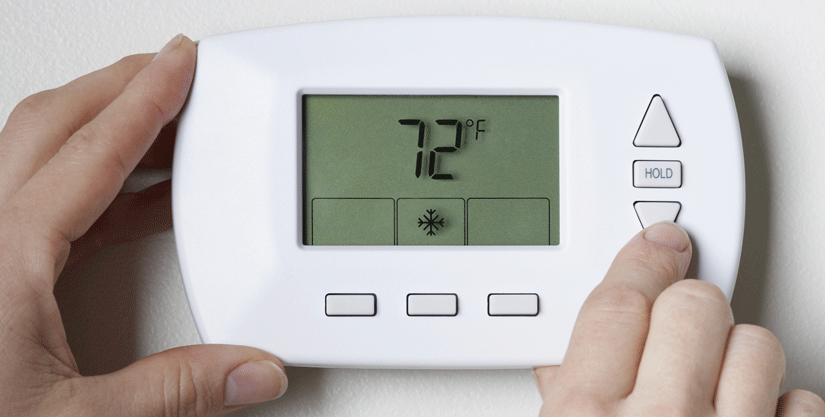 Common Thermostat Problems
Common Thermostat Problems
Usually, a thermostat issue is subtle. You won't likely experience a dramatic puff of smoke or any shooting sparks, but you will be able to tell if your thermostat is not working propperly. Some common symptoms of a malfunctioning thermostat include your heat failing to come on and temperatures in your home being inconsistent. If you are experiencing heating or air conditioning troubles, your thermostat is always a great place to begin your troubleshooting process. If your are experiencing any of these symptoms below, read on to learn how to fix your thermostat to address these issues.
If Your Furnace Will Not Turn On:
- Check the thermostat's power. A blown fuse, tripped circuit breaker or dead batteries will prevent the thermostat from turning on your furnace.
- Check the cleanliness of the thermostat. Dust and other airborn particals can build up inside your thermostat around its internals, which can impact both electrical and mechanical components. Remove the cover by prying off the face or removing screws and diconnect the unit from power (switch off the breaker or remove the batteries). Then, use a soft brush like a paintbrush or toothbrush to clean the interior components gently. Move parts to ensure you don't miss any dust buildups in the thermostat. A can of compressed air, such as is used for electronics, also works well.
- While you have the face removed, check for loose wires or terminal screws. Are the wires corroded? Tighten screws and secure loose wires when necessary. Consult the manufacturer’s wiring schematics or have a qualified technician rewire the thermostat if needed.
If the Room Temperature Doesn't Match the Thermostat Setting:
- Is the inside of the thermostat clean? A dirty thermostat is an inaccurate thermostat.
- Is the thermostat level? Hold a level underneath or above it and check. Careless installation or a forceful bump, knocking it off level, may alter the accuracy of the components.
- Is the thermostat in a poorly chosen area of the home? Thermostats located in direct sunlight, in front of cold or drafty windows and doors, or isolated from the main living areas may not regulate the temperature correctly. Consider relocating the thermostat or taking other measures to solve the problem. Consult a professional for further information.
- The anticipator may not be set correctly. The anticipator is a little metal tab inside mechanical thermostats, mounted to a round dial with a printed scale. Pushing lightly on the anticipator, in either direction, may solve the issue. More complex adjustments require moving the anticipator to indicate the ampere setting needed for the furnace involved. Typically, this is specified in the owner’s manual or on the unit’s service panel. Consult a qualified technician for further assistance.
If the Furnace Turns On and Off Erradically:
- Is the thermostat clean, inside and out? Buildup of any type may interfere with proper thermostat operation.
- Does the anticipator need adjustment? Simply moving the anticipator arm one notch toward longer should cause a furnace to run longer during its cycle. Moving it away helps if the room temperature fails to reach the thermostat settings. Wait two or three hours after any adjustments to see if the problem is solved.
- Is the thermostat completely level? Use a level to adjust it until correct.
Replace the thermostat if other troubleshooting methods fail. The most expensive programmable electronic thermostat costs around a couple hundred dollars, and inexpensive mechanical ones cost around $20. Worrying over a thermostat you can’t make work – or paying a professional more than a new one costs – just isn’t worth it.
If you need any further help with your thermostat, contact Warner Service today to have a qualified technician address your heating needs. You can also learn about programmable thermostats by watching Warner Service's Programmable Thermostat Video Guide:


